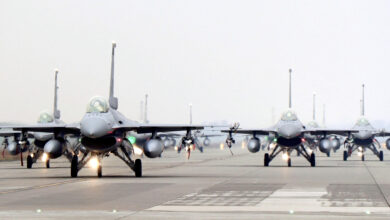Lockheed to Develop AI Tools for DARPA’s Autonomous Air Combat Capability
The Defense Advanced Research Projects Agency (DARPA) has contracted Lockheed Martin to develop artificial Intelligence tools for autonomous, airborne missions.
Surrogate models of aircraft, sensors, electronic warfare, and weapons will be built under the $4.6-million contract as part of the Artificial Intelligence Reinforcements (AIR) program.
The models will be built for a dynamic and operationally representative environment within 18 months.
“In complex airborne missions, our customers need access to advanced technologies that connect critical systems quickly across all domains,” VP of Engineering and Technology for Lockheed Martin Missiles and Fire Control Gaylia Campbell said.
“The DARPA AIR program will use state-of-the-art scientific ML technology and Lockheed Martin’s ARISE infrastructure to deliver unprecedented amounts of data that service members can use to make faster and more informed decisions.”
Autonomous BVR Capability
The AIR program aims to develop autonomous, beyond-visual-range (BVR) air combat capability compatible with existing sensors, electronic warfare, and weapons within a dynamic and operational environment.
It enhances the within-visual-range autonomous capabilities developed and demonstrated under DARPA’s Air Combat Evolution program, moving to the BVR domain.
Autonomy solutions will initially be tested on manned F-16 testbeds and then be transferred to an unmanned combat aerial vehicle.
It will also develop processes for rapid design, testing, and delivery of future AIR software products iterations.












